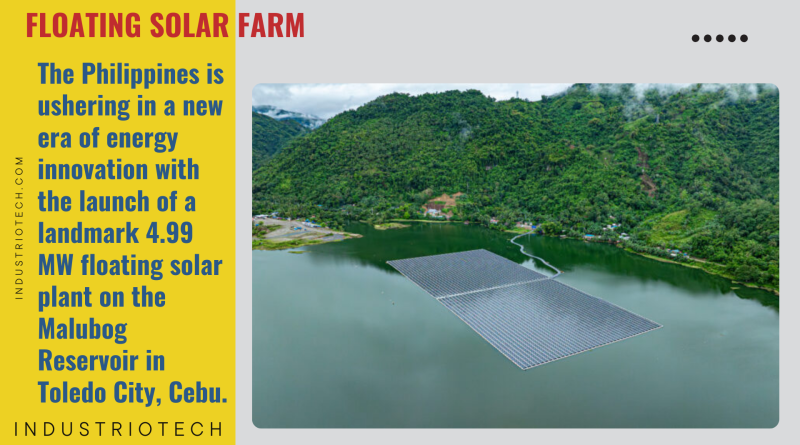Floating Solar Farm
The Philippines is ushering in a new era of energy innovation with the launch of a landmark 4.99 MW floating solar plant on the Malubog Reservoir in Toledo City, Cebu.
This groundbreaking floating photovoltaic farm is a joint effort between Carmen Copper Corp. and the global engineering firm Black & Veatch, marking the first project of its kind in the Philippines. This pioneering initiative proves that renewable energy solutions can seamlessly integrate into industrial operations.
Black & Veatch, the project’s Engineering, Procurement, and Construction (EPC) contractor, brought the vision to life. The work involved installing 8,540 solar panels, a new prefabricated substation, and a six-kilometer overhead distribution line to connect the plant to Carmen Copper’s existing grid.
Completed In 15 Months
The construction of the plant was completed in just 15 months, on time and within budget, with an impressive safety record of over 250,000 man-hours worked without any lost-time injuries.
“This initiative reflects Carmen Copper’s commitment to responsible mining and environmental stewardship, while aligning with the Department of Energy’s target to have renewable energy account for at least half of the country’s total power capacity by 2040,” said Atty. Axel G. Tumulak, Carmen Copper Head of Legal, Compliance, and Corporate Governance. Carmen Copper is a wholly owned subsidiary of Atlas Consolidated Mining and Development Corporation.
As part of its responsible mining policy, Carmen Copper has integrated the solar facility into its operations. The plant currently supplies about 10% of the power needed for the mine, significantly reducing its reliance on fossil fuels.
Why Floating Solar Is A Game-Changer
The decision to install the solar array on the Malubog Reservoir capitalizes on several key advantages of floating solar technology, often called “floatovoltaics.” One major benefit is the water’s cooling effect, which helps maintain lower operating temperatures for the panels, improving their efficiency compared to land-based systems.
Additionally, using a water body avoids the need for valuable land that could be used for agriculture or other community purposes. The floating panels also help reduce water evaporation from the reservoir, a critical environmental benefit in a region where water resources are becoming more scarce.
Interestingly, the reservoir was initially created in the 1970s by Atlas Mining to meet the water needs of its operations. Over time, it has become the water source for Toledo City, with a surplus capacity of 100,000 cubic meters of potable water per day.
A Clear Path To A Sustainable Energy Future
The project’s significance goes beyond just the current installation. The 4.99 MW system is fully scalable, with the potential to expand to 50 MW. This expansion could eventually enable Carmen Copper to power its entire operations with 100% renewable energy, providing a real-world example of large-scale industrial decarbonization.
This project is a strong endorsement of the Philippines’ renewable energy targets and aligns with the Department of Energy’s goal to source 35% of the nation’s power from renewable sources by 2030, with an even more ambitious target of 50% by 2040.




